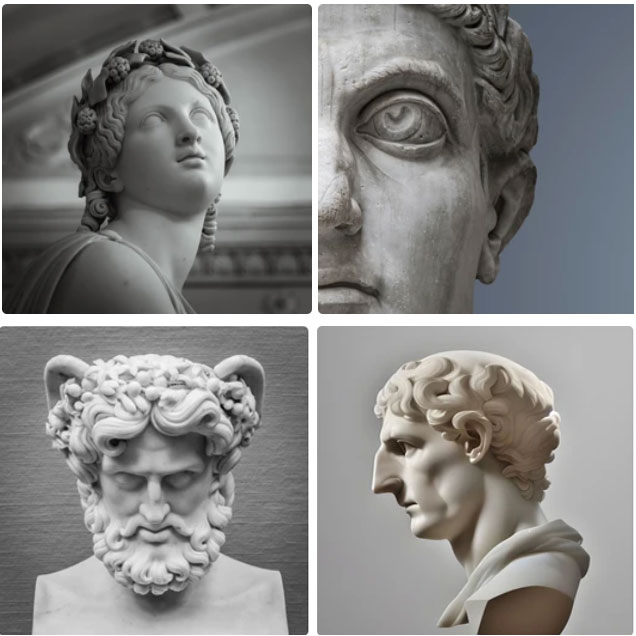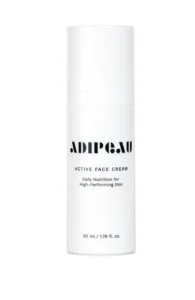The nose is a unique facial feature that can have an impact on the overall appearance of a person. It is also a powerful symbol of personality. Embark on a visual journey as we delve into the fascinating world of facial aesthetics, uncovering the key differences between the Roman nose and Greek nose, exploring their distinctive features.
In Greek mythology, gods and heroes often displayed distinct features that often included the shape of their noses. These features accentuated their divine or heroic qualities.
Table of Contents
Aesthetics
Noses come in a mesmerizing array of shapes and add to the unique beauty of each face. They also help communicate a person’s history and heritage. Nose shapes have shifted over time and across cultures, reflecting the changing ideals of what considered attractive. Symmetry, proportion and a defined nasal tip are all important factors that influence nose shape.
The Roman nose or aquiline nose characterized by a prominent nasal bridge with a noticeable curve, often leading downwards. This distinctive nose shape inspired by ancient Roman art and sculptures and has long been associated with power, nobility and regality. It is also a common feature in artwork by ancient Greek artists.
This nose shape is a favourite among many people, and it’s commonly seen on the faces of celebrities and royalty. Its elegance and balance make it a classic choice for Rhinoplasty patients who want to enhance or change their nose shape.
Other popular nose shapes include the hawk nose or hooked nose, which characterized by its curved or angled appearance. The hawk nose is reminiscent of the beak of birds of prey such as eagles and hawks, which may explain its enduring appeal. This type of nose is also common among individuals with Middle Eastern descent.
The button nose is a small and delicately shaped nose that’s commonly found on individuals of East Asian descent. It’s a cute nose shape that many Rhinoplasty patients request to add a hint of femininity and refinement to their facial features.
Regardless of your preferred nose shape, Rhinoplasty can make any changes you desire to your facial features. It’s a popular procedure that’s effective for almost any nose problem, including a wide nostril size and an upturned or crooked tip.
Nose shapes are a fascinating reflection of a person’s culture and heritage, and they can tell a lot about their personality. While there’s a strong preference for a straight nasal bridge with a well-defined tip in Western culture, nose shapes have diversified over the years and continue to evolve across regions and ethnicities.
Myths and stereotypes
While there is no such thing as a universal nose shape, certain types of noses are more common than others. Various features of the nose like the nostrils, bridge and tip can determine what nose shape one has. There are also different characteristics that distinguish each nose shape, including its size and width. The most popular nose shapes are the Roman nose, the Greek nose and the hawk nose. These nose shapes have become cultural phenomena for their unique attributes and distinct beauty.
The Roman nose is a straight shape with a prominent nasal bridge and a curved tip. It is a very masculine nose shape and is often associated with a strong personality. It is a favorite nose shape of men, and celebrities who have this nose type include Tom Cruise and Ryan Gosling.
In contrast, the Greek nose is a narrow nose shape that creates a balance between the other facial features. The symmetrical appearance of this nose shape is very attractive, and it often seen in ancient art and sculptures. It commonly believed that a Greek nose shape is indicative of good luck and health. Jennifer Aniston is a famous example of this type of nose.
A hawk nose, or aquiline nose, is another popular shape of the nose. It is long and narrow with a downward curve at the tip, similar to the beak of a bird. It is a popular choice among male celebrities, including Ryan Gosling and Daniel Radcliffe.
Another common nose shape is the nubian nose, which is a wide nose with a smaller base. It is a popular nose shape among African communities and carries cultural significance. It is a sign of beauty and strength and has an innate sense of naturalness. While some individuals may not have this nose shape, there is no need to feel ashamed of it. Rhinoplasty surgery can help change the shape of any nose, and it is important to seek a specialist who has extensive experience with this procedure.
Ethical considerations
The aquiline nose has been associated with various cultural heritages and aesthetic standards. In ancient times, the shape was considered to be a mark of beauty and nobility. The aquiline nose was also a symbol of the Greek gods, who had an exquisite and elegant appearance.
The desire for certain facial features like the aquiline nose in cosmetic procedures has some ethical implications. Balancing individual desires for specific nose shapes with societal norms and cultural heritages can be challenging. This is especially true for racial features. Throughout history, different racial and ethnic groups have had their own standards for the ideal nose shape. These standards were often based on stereotypes and myths.
While there are some myths and stereotypes associated with different nose shapes, the truth is that a person’s nose shape depends on genetics and their environment. For example, a person’s nose width and height usually determined by their genes. However, other factors, such as childhood trauma and birth defects, can affect how a person’s nose develops.
In addition to these factors, a person’s environment and lifestyle can influence their nose shape. A person’s diet, stress levels, and exercise habits can all impact the shape of their nose. For this reason, it is important to avoid putting too much emphasis on specific facial features.
Although the aquiline nose has associated with many different cultures, it is still a desirable feature in cosmetic procedures. This is because it can improve a person’s facial balance and enhance their physical appeal. Moreover, this nose shape is associated with other characteristics that are consider attractive, such as a straight face and a delicate tip.
There are some myths and stereotypes associated with the aquiline nose roman nose and greeknose, but the truth is that there is no one-size-fits-all nose shape. While the aquiline nose is typically associated with European and Mediterranean cultures, it also found among people from other parts of the world.
Cultural implications
The nose has a unique beauty that celebrated in various communities and ethnicities. For some, it symbolizes a connection to heritage and ancestral roots. Others see it as a mark of strength and power. The nose shape is also a symbol of identity and pride. It is a part of the cultural fabric that binds us together and helps to create the uniqueness that we each possess.
The Greek Nose
Named after the Greek sculptures it resembles, this nose has a straight bridge with no curves. It often seen in ancient artwork and sculptures, and it regarded as one of the most beautiful nose types. The Greek nose is a masculine feature that conveys strength and confidence. Famous personalities with this nose shape include Jennifer Anniston and Ryan Gosling.
Roman Nose
Known for its prominent bridge and downward slope, the Roman nose associated with elegance and strength. It commonly seen in people of Roman and Mediterranean descent, but it can found among other European and Middle Eastern cultures as well. This nose type associated with royalty and nobility. The Roman nose sometimes confused with the Greek nose because of their similar appearance, but the two have distinct differences.
Button Nose
Featuring a small, rounded tip with a slightly upturned appearance, the button nose also referred to as a snub or hawk nose. This nose shape generally considered cute and youthful, although it may be more noticeable on certain face shapes. The rounded tip gives it a softer and less aggressive appearance.
Hook Nose
The hooked nose characterized by a pronounced hump on the bridge and a downturned appearance. It is the opposite of the aquiline nose, which has a gentle curve at the tip. Some believe that the shape of a person’s nose linked to their intelligence, personality, and even their level of sexiness. However, these claims are not based on scientific research and may be misleading.
The beauty of nose shapes lies in their diversity and the rich tapestry of identities that they add to the human experience. Whether it is the Roman nose of Rome, the Greek nose of Greece, or the button nose of East Asia, each one carries its own allure and symbolism. By exploring and celebrating these different nose shapes, we can promote a greater understanding of the diverse culture that makes up our global community.
Recommended Readings:
- How Rhinophyma Is Treated?
- Common Myths About Medical Spa Procedures Debunked
- What is Rosacea?
- Why Do I Have an Outie Belly Button?
- Medical Spa Software
@qunomedical Replying to @valerie☆ so here’s the difference between a Roman /Aquiline Nose and a Greek Nose 👀 Do you have any questions? Let us know in the comments 👇 #qunomedical #nosejob #rhinoplasty #foryou #fyp #romannose #romannoses #romannosefilter #rhino #facts #greeknose #aquilinenose








